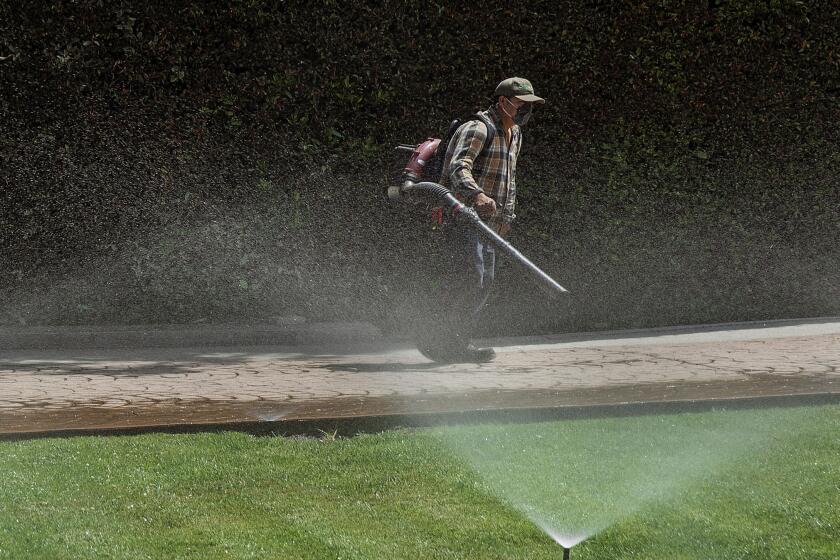Seeing Spots? It’s Time to Call the Dieffenbachia Doc
- Share via
QUESTION: My dieffenbachia plant has recently developed brown spots on about half of its leaves. These are different from the dry, brown tips caused by lack of humidity--they are soft and mushy and usually appear in the middle of a leaf. Can you give me a diagnosis and a cure?
ANSWER: The doctor is in! Your dieffenbachia has a classic case of leaf spot, a fungus caused by a combination of not enough light and too much water. This condition occurs most commonly on dieffenbachias, dracenas and citrus plants. Remove the infected leaves, spray the rest of the plant with a commercial houseplant fungicide, let the plant dry out and then resume watering only when the soil is dry to the touch. If possible, move your dieffenbachia to a brighter spot.
Soap and Water Will Keep Plant Dust-Free
Q: I have a rubber plant (Ficus elastica) whose leaves are dull and flat-looking. I’ve seen the same plant with bright, shiny leaves. A friend told me you can shine the leaves with olive oil or mayonnaise, but I don’t want to try it until I check with you. What say you?
A: I say, save the olive oil for your salads and the mayonnaise for your sandwiches and clean your rubber plant’s leaves (and the foliage of other broad-leafed plants like schefflera, dieffenbachia and dracena) with soap and water. Oily and waxy substances can clog a plant’s stomata (breathing cells) and inhibit the plant’s growth. Soap and water will keep the foliage dust-free, healthy and natural looking. If you absolutely must have mirror-shiny leaves, buy one of the specially prepared leaf-shine products you’ll find at your local nursery, garden center or discount store.
Liquid Versus Spikes: Which Fertilizes Better?
Q: In a recent column you recommended chemical plant food over organic for houseplants. What’s your position on liquid fertilizer versus the fertilizing “spikes”?
A: I prefer the liquid fertilizer--a few drops in water according to directions on the bottle. It’s true that pushing a spike or a pill into the soil is quicker and slightly less hassle, but when you use the spikes, most of the nutrients settle into one spot instead of being absorbed by the entire root system of the plant. And it’s much more difficult to control the plant’s resting period when using the spikes.
*
DEAR READERS: To the dozens of you who have written in the last few weeks to complain of your Ficus benjaminas dropping leaves, take comfort in the fact that most of the time this winter defoliation is a natural phenomenon that occurs every three or four years. I personally am nurturing four braided ficus trees that are each about half-nude. With luck, and now that spring has arrived, things will improve.
*
Are your palms pooping? Are your ferns flopping? Send your houseplant questions to the Indoor Gardener, the Real Estate section, Los Angeles Times, Times Mirror Square, Los Angeles CA 90053. Questions cannot be answered individually.






